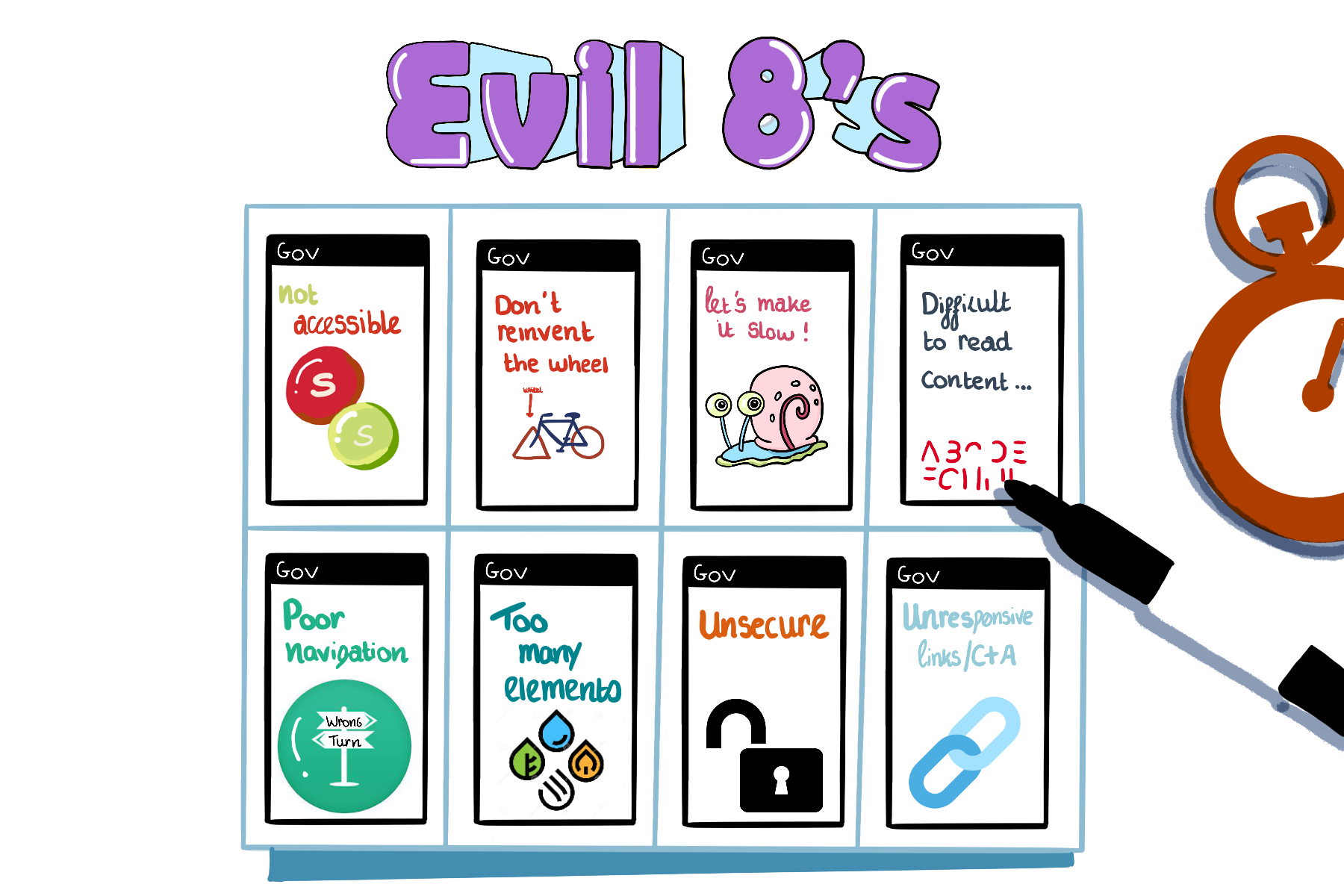Crazy 8's: How this Ideation Method Can Supercharge Your Design Process
In the world of design, ideation is a critical process that sets the foundation for any successful project. The ideation phase involves generating and exploring ideas, often through brainstorming sessions, in order to identify potential solutions and directions for a design project. One popular ideation method used in the design industry is known as "Crazy 8's."
Crazy 8's is a rapid sketching exercise, designed to help teams generate a large number of ideas in a short amount of time, and it is particularly useful for generating a variety of divergent ideas early in the ideation phase. Here's how it works:
Set a time limit of eight minutes: The exercise is called "Crazy 8's" because participants have eight minutes to sketch eight different ideas.
Divide a sheet of paper into eight sections: Fold a piece of paper in half, and then fold it in half again. Unfold the paper and you should have eight sections to work with.
Sketch a different idea in each section: Each participant sketches a different idea in each section of the paper, using the time limit to keep the ideas flowing.
Don't worry about perfection: The purpose of the exercise is to generate as many ideas as possible, so don't worry about creating perfect sketches. Stick figures and rough sketches are perfectly acceptable.
Share and discuss the ideas: After the time limit is up, each participant shares their ideas with the group. The group can then discuss and build on the ideas generated during the exercise.
Crazy 8’s example from a Design Sprint within Universal Credit, DWP.
Crazy 8's is a simple yet effective way to generate a large number of ideas quickly. It encourages participants to think outside the box and explore a variety of directions for a design project. The exercise also helps to level the playing field, as everyone has the same amount of time and space to work with, regardless of their artistic ability.
In addition to generating ideas, Crazy 8's can also help teams build trust and collaboration. By sharing and discussing their ideas, participants can learn from each other and gain a better understanding of the design problem at hand. The exercise can also help to break down communication barriers and encourage more open and creative thinking.
In conclusion, Crazy 8's is a valuable ideation method that can help design teams generate a large number of ideas quickly and effectively. By setting a time limit, dividing a sheet of paper into eight sections, and sketching a different idea in each section, teams can explore a variety of divergent ideas early in the ideation phase. Whether you're a seasoned designer or just starting out, Crazy 8's is a fun and effective way to jumpstart your creativity and generate innovative solutions to design problems.
Evil 8's: Using Reverse Brainstorming to Unlock Innovative Solutions
Evil 8's reverse brainstorming and Crazy 8's are two design thinking techniques that can help teams generate innovative ideas and solve complex problems. While Crazy 8's is a fast-paced ideation exercise that involves sketching eight ideas in eight minutes, Evil 8's reverse brainstorming flips the problem on its head by asking participants to come up with the worst possible solutions to a problem. This approach can help teams identify potential roadblocks and obstacles and develop more effective solutions. By combining these two techniques, teams can create a diverse range of ideas and evaluate them from different perspectives, leading to more creative and innovative solutions.


